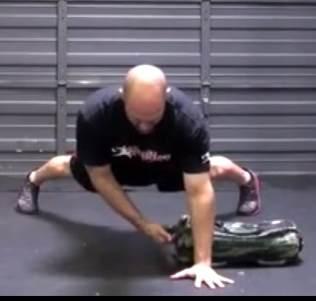
Advanced CORE Training for MMA, BJJ and Other Combat Athletes
by Josh Henkin
Two things that fighters think they never have enough of, core strength and endurance. While of course this sometimes can be the case, a proper understanding of the two leads to more effective training.
We could talk in great depth about core strength and endurance training for fighting, but heck that would be well beyond the scope of one article. In order to do a topic justice, let’s look at the very confusing world of core strength.
To say that just mentioning the word “core” could get anyone in fitness and/or performance training talking is an understatement!
Really appreciating what core strength is and how it can help take your fitness to another level, we have to understand some fundamental concepts. The first is the core isn’t just a fancy word for “six pack abs”. You can have great looking abs, but a weak core. One really doesn’t have to do the other. Looking cut has more to do with your body fat levels than your actual strength.
The name “the core” is descriptive of looking at the center of our body, but also non-descript in the different ways that it works. In a very general sense, the core will incorporate the abdominal muscles (both superficial and deep), the muscles of the back (including the upper back), and the hips (the hamstrings, adductors, hip flexors all attach onto the pelvis influencing the core).
The Connections
The core isn’t about how these muscles work in isolation, but together. In fact, renown Canadian physical therapist, Diane Lee, outlines four chains.
- Anterior Oblique System: External and internal oblique with the opposing leg’s adductors and intervening anterior abdominal fascia.
- Posterior Oblique System: The lat and opposing glute maximus.
- Deep Longitudinal System: Erectors, the innervating fascia and biceps femoris.
- Lateral System: Glute medius and minimus and the opposing adductors of the thigh
What does this all mean? Just doing crunches, sit-ups, or even just planks isn’t enough.
Core Levels
Core strength is a bit more complex than just trying to do a ton or repetitions, or lift a huge weight. That is because the core’s job is not jut to lift or produce force. What might be equally, if not sometimes more important, is teaching the body to resist a lot of motion.That means we have actual levels of core training that we look to use.
Level 1: Static Endurance Strength: Examples…planks and side planks
Level 2: Anti-Rotational Training: Examples….lateral bag drags and renegade rows
Level 3: Static Trunk Dynamic Hips: Examples….carries, front loaded good mornings, suitcase deadlifts
Level 4: Rotational Training: Examples….around the worlds, rotational snatch.
There are many levels that exist within all these levels, for tons of variety but keep the purpose clear!
Speed
When it especially comes to fighting sports, most people think of doing tons of explosive core work. While it has its place, the right time to use it is of the utmost importance. In my experience with MMA athletes they often have not spent enough time under slower speeds.
Why do so?
Slower speed core work helps build proper core coordination (especially that of the trunk and pelvis) and time under tension. One situation I saw slowing down some MMA athletes actually made them so exhausted they literally became nauseas. While that was far from the goal, it told me that such CORE Training for MMA was far more stressful to them than the very explosive work they had prioritized in the past.
Start slow, build speed progressively, then have balance between the two!
Put it Together
The video for this article demonstrates how you can put together a comprehensive core training program with minimal equipment. This also doesn’t count the functional exercises such as full body lifts that additionally teach the qualities of strength, endurance, and coordination. Don’t look at CORE Training for MMA the same!
This video walks us through some examples discussed in this article.
Josh Henkin is a world renowned strength coach and teaches his DVRT system to athletes and coaches around the globe. To learn more about his system, click here.




